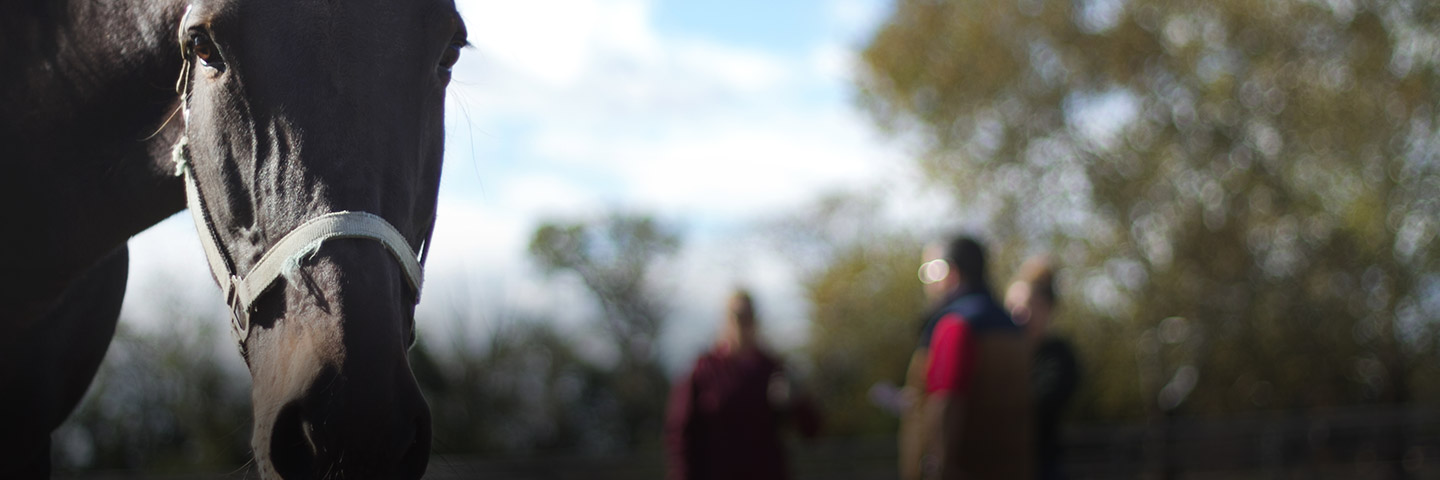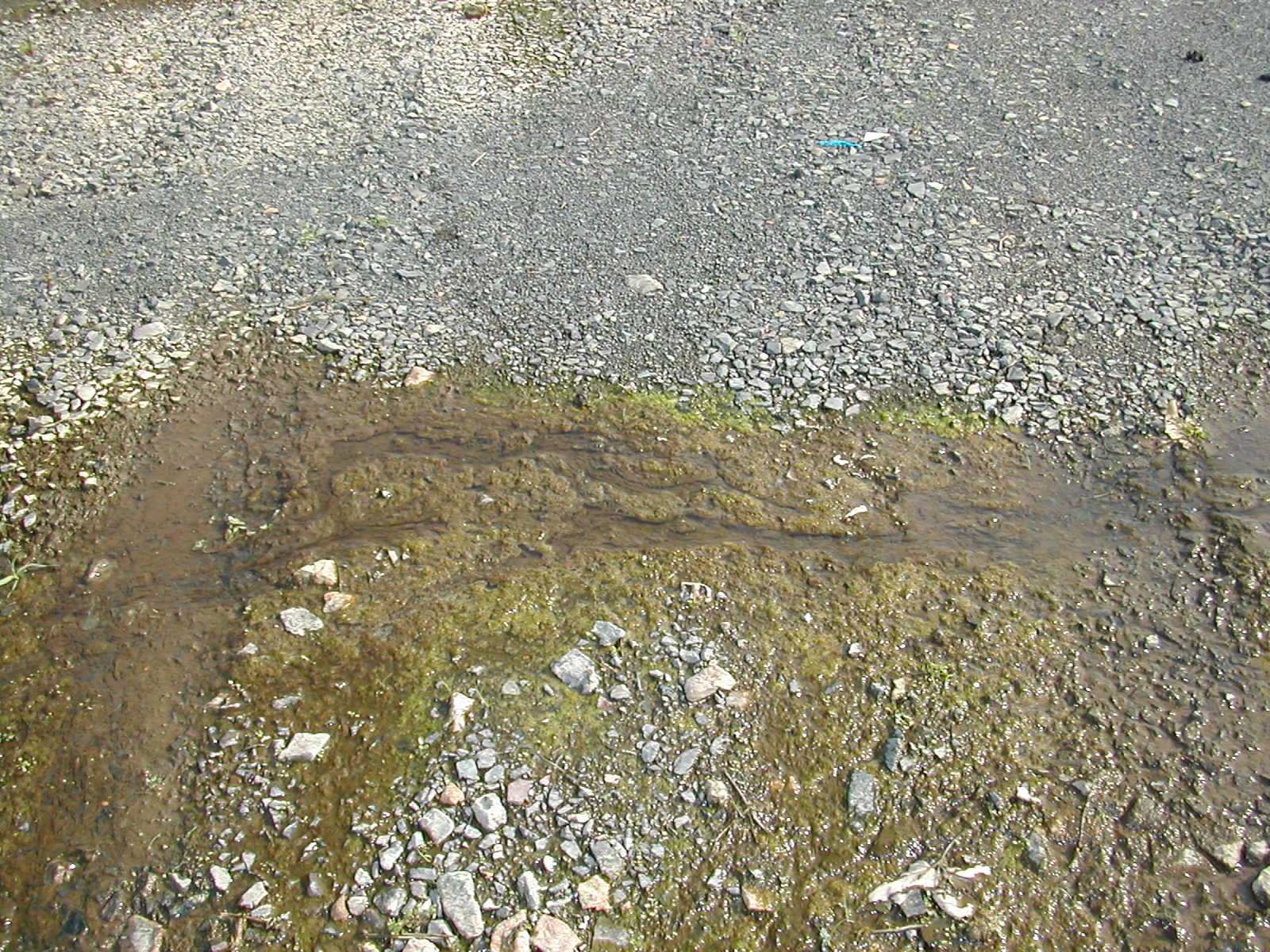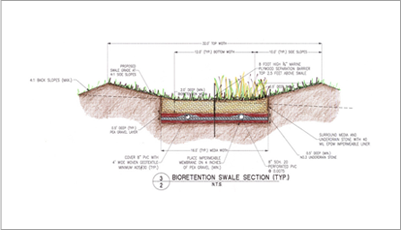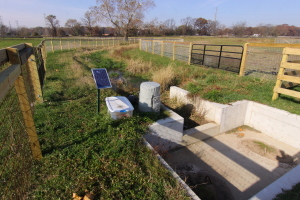Stormwater Runoff Paddock Drainage System
The Rutgers Cooperative Extension Water Resources Program, in cooperation with the Equine Science Center, designed and installed a new roof drainage system for the paddock area on the southeast corner of the barn at the Ryders Lane Facility.
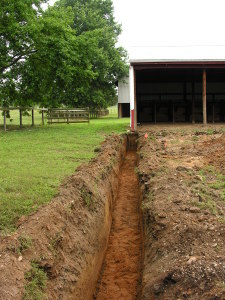
The initial trench along south side of the paddock area.
The work complete at the site consisted of:
-
1.
An underground drainage system which was constructed to eliminate contact between clean roof drainage and water that drains from the paddock area.
-
2.
A drainage system which was constructed to allow rain water to infiltrate during small storms and drain to a downstream bioretention basin during larger storms.
The piping system consists of perforated 4” PVC pipes laid in a 1’ bed of clean ¾” stone. This project has been very successful in reducing the amount of mud and transport of fecal material out of the paddock area. It represents a relatively simple, inexpensive and effective strategy for reducing contaminated runoff and maintaining the structural quality of a paddock area.
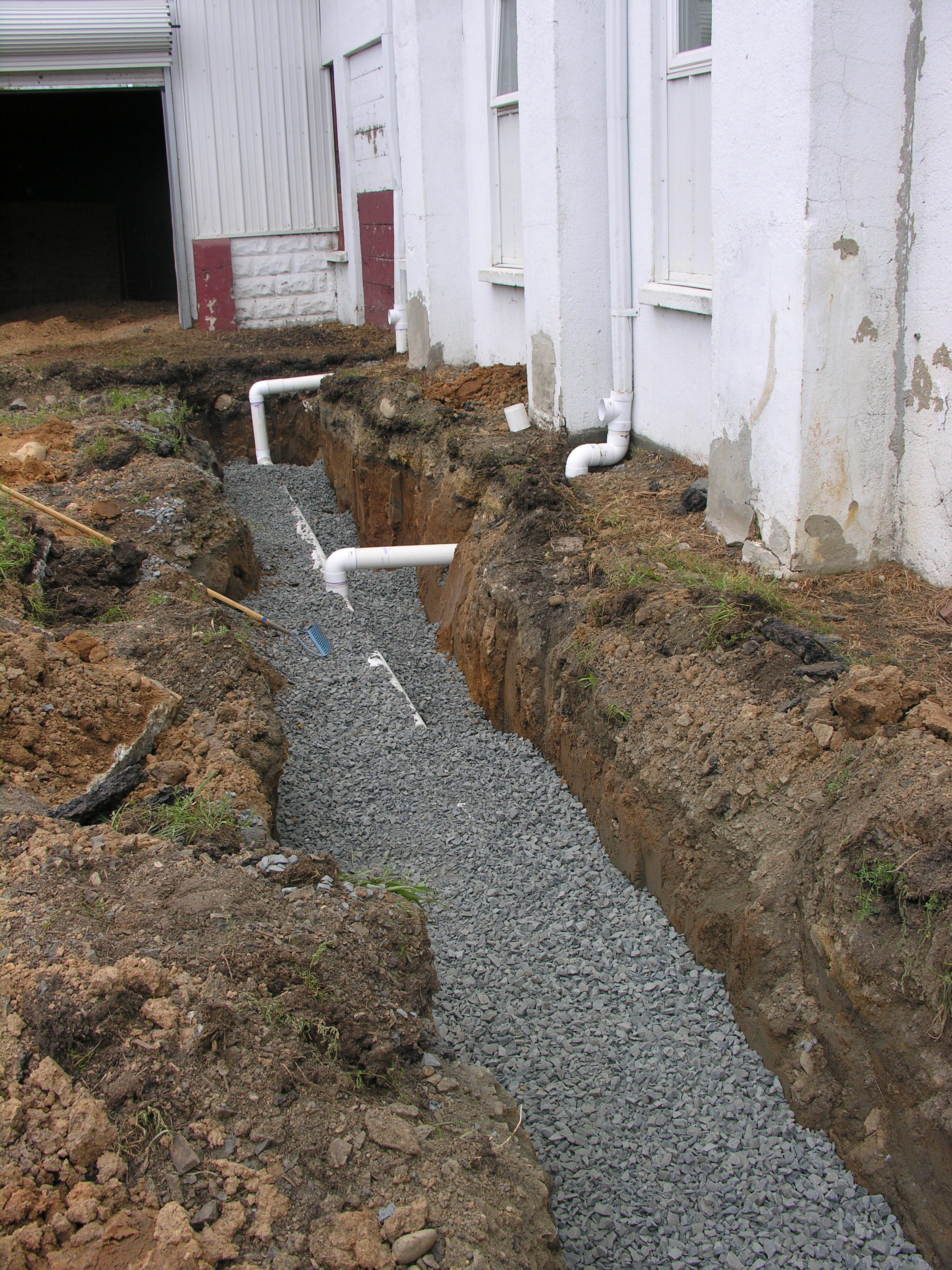
drainage trench with horizontal pvc pipes in a bed of 3/4" stone, including roof leader connections
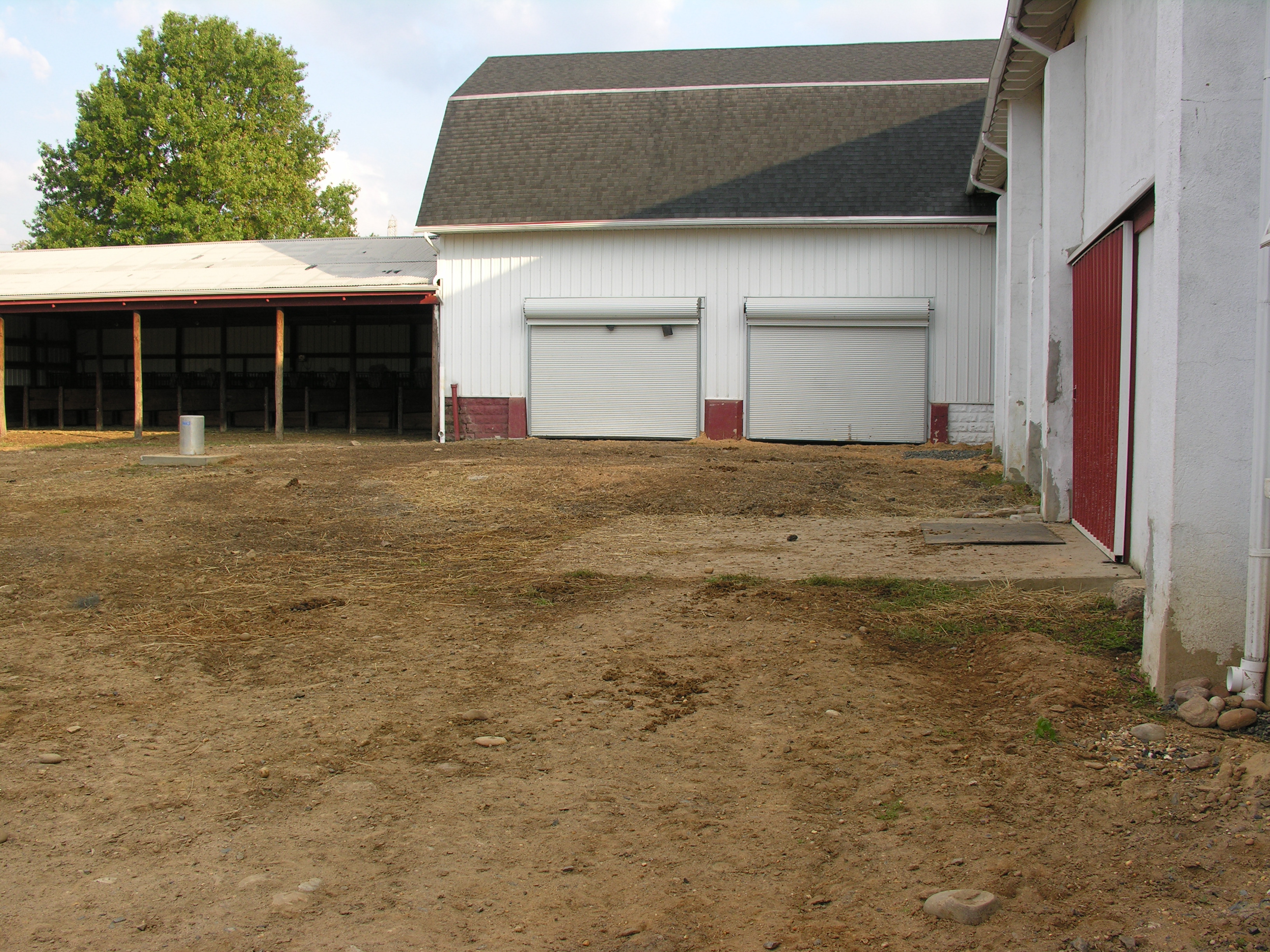
Dry Lot Paddock Area post-construction
Custom Designed Rain Garden
Rain gardens are gardens specifically designed to soak up rain water mainly from roofs, but also from driveways and lawns. In cooperation with the Equine Science Center, the Rutgers Cooperative Extension Water Resources Program designed and installed a rain garden for the paddock area on the southeast corner of the barn at the Ryders Lane Facility. The rain garden will help remove nutrients that wash through the manure in horse paddocks due to storms.
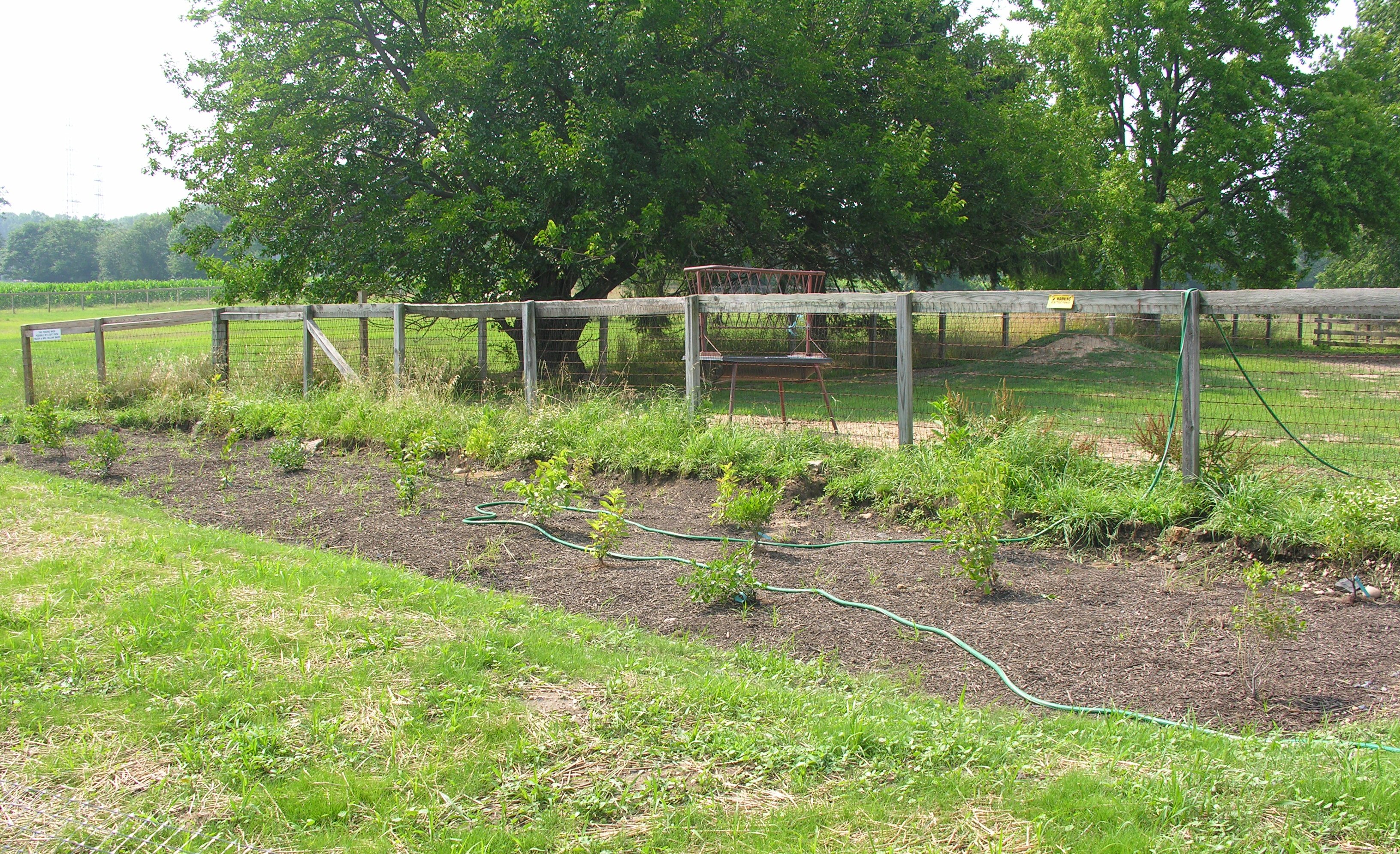
During Dry Spell, Rain Gardens Should be watered manually to maintain plant growth.
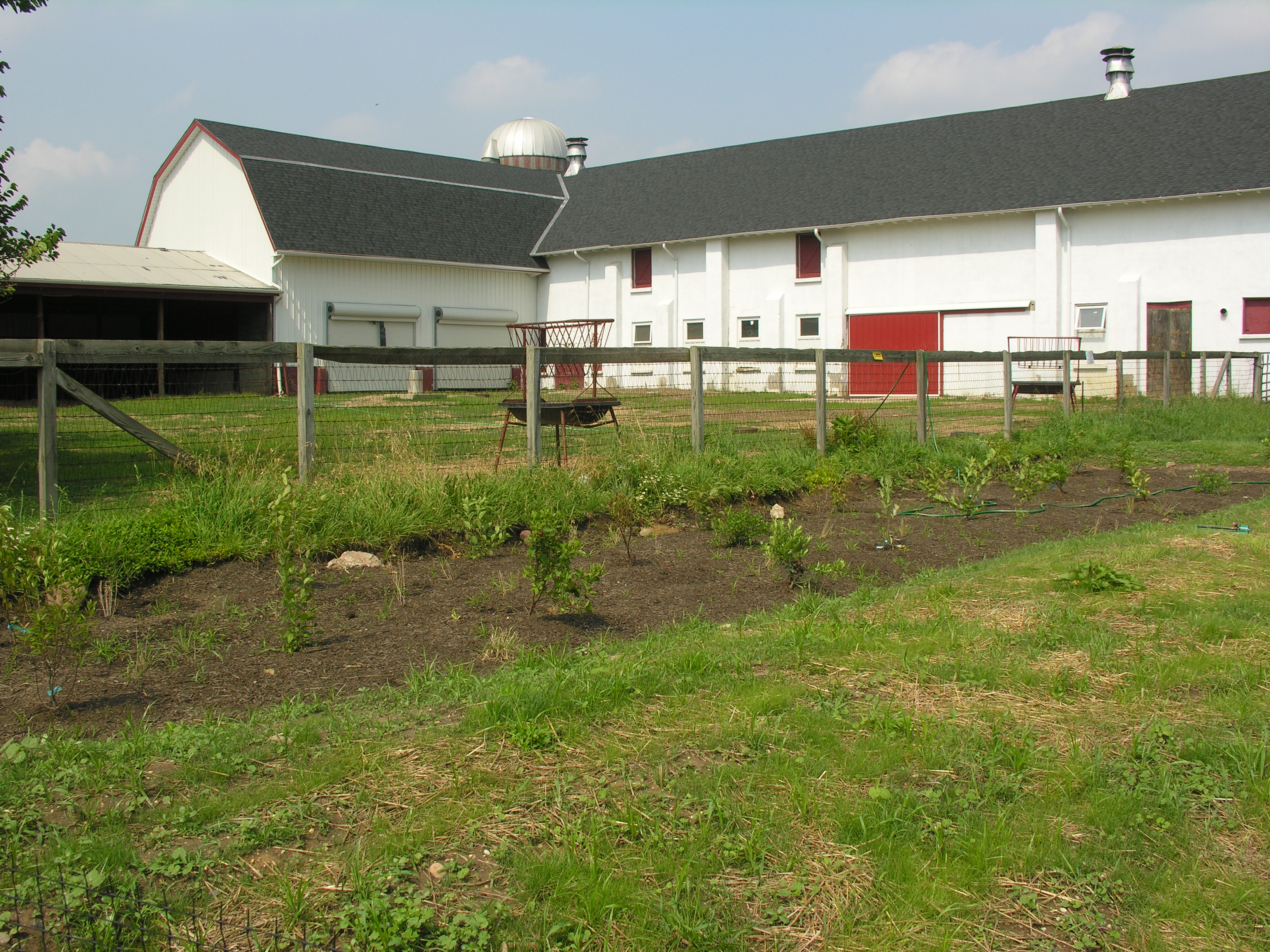
The Rain Garden will filter the nutrients in water runoff coming through the adjacent horse paddock.
Our rain garden contains the following plants:
- Sweet Pepper Bush
- Switchgrass
- Purple Coneflower
- Arrow-wood Vibernum
- New York Aster
- Inkberry Holly
- Winterberry Holly
information on NJDEP wetlands regulations
The following are some resources which give information on the New Jersey Department of Environmental Protection (NJDEP) regulations that affect agricultural operations.

